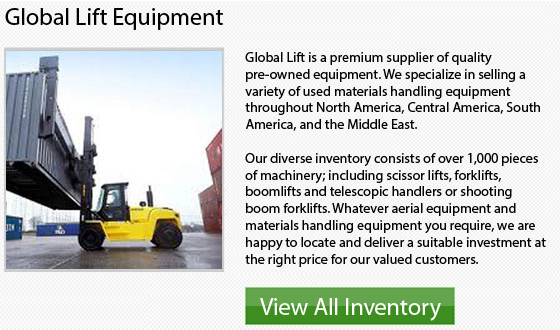
Even though sales volumes have normally been small, about 1% to 5% of the worldwide forklift market; side-loaders have become the dominant choice of machine within the material handling industry for dealing with unusual loads in a simple manner.
Sideloaders are rather popular in the aluminum, timber, steel, glass, aviation and construction industries. Moreover, they are utilized in industries which are producing unconventional items including windmill arms and moldings. Basically any business which produces oversized long or awkward objects utilizes the side-loaders.
In the beginning of the 1950's, Henry Le Grande Lull from the Lull Manufacturing Company originally made the sideloader lift truck. These early units were requested from the United States Air Force. The first idea was patented for commercial use but it was not made until Lull Manufacturing was taken over during the year 1959 by the Baker Raulang Company. It was Baker Raulang who produced the design. Afterward, the name was changed to Baker Traveloader. In the latter part of the 1950s, the side-loaders were launched in Europe. The early models were designed by Italian manufacturer Fiora and the afterwards B-P Battioni e Pagani who pioneered the equipment's utilization within timber yards.
The side-loader is a little different from the counterbalanced forklift, since the traditional forward-traveling lift trucks have front facing forks whilst the side-loader has side facing forks. The operator however will drive in a cabin similar to those utilized in traditional forklifts. The loading, unloading and lifting functions are done by the mast located at the right-hand side of the driver. The cargo is typically transported lying on a metal or wooden deck. This helps to lessen distortion, stress and damage to the cargo. Recent innovations to the side-loader design have incorporated a large range of lifting accessories being developed.
Some of the advantages of utilizing side-loaders over reach-stackers or conventional forklifts include: better visibility, safer operating conditions, and faster traveling speeds as well as the ability to utilize available space more efficiently.
You would just be able to precisely know the best kind of machinery to finish your tasks, when you have fully assessed the work environment and types of jobs you will be performing. There are several great rental alternatives available too in order to know the best type of machine to suit all your needs. Doing some research online or talking to a reputable dealer is one more great way to get some information as well when trying to know the best alternative.